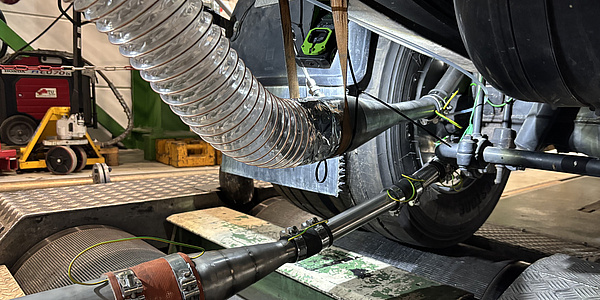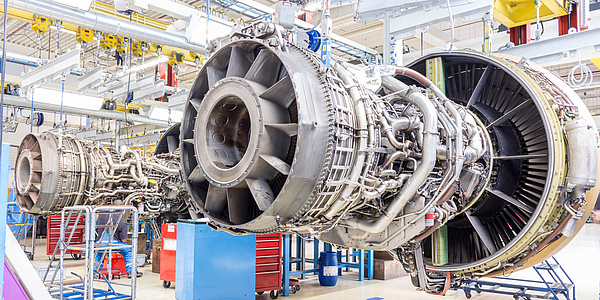On a Roll: Measurements on the Dynamometer at TU Graz
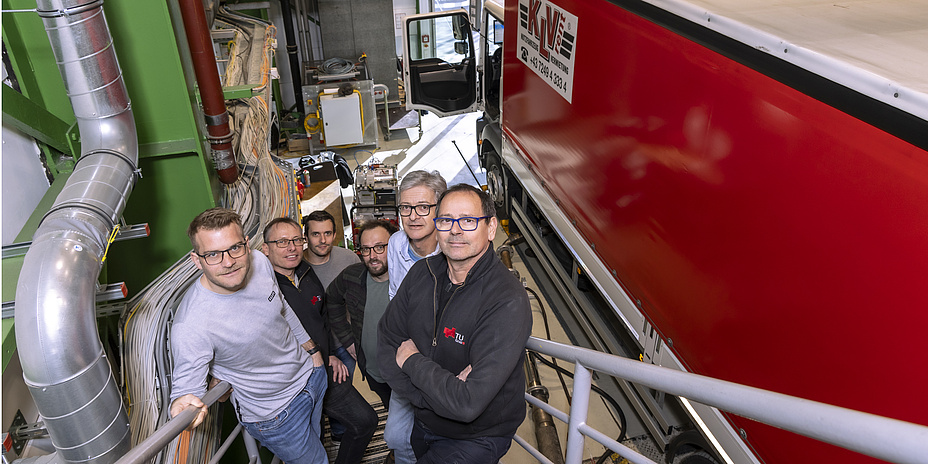
“We can take much more precise measurements when the lorry doesn’t drive away from us,” says Stefan Hausberger with a twinkle in his eye. At the Institute of Thermodynamics and Sustainable Propulsion Systems, researchers can test all types of vehicle, from the smallest moped to large lorries or buses. This is made possible by several dynamometers for different sized vehicles. Mopeds and motorbikes are run on the two-wheeler test bench, cars on a medium-sized test bench and even entire buses, HGVs and articulated lorries are run in the largest and longest hall. “If we open the doors, we can even test entire articulated buses,” says Hausberger, talking about the possible dimensions.
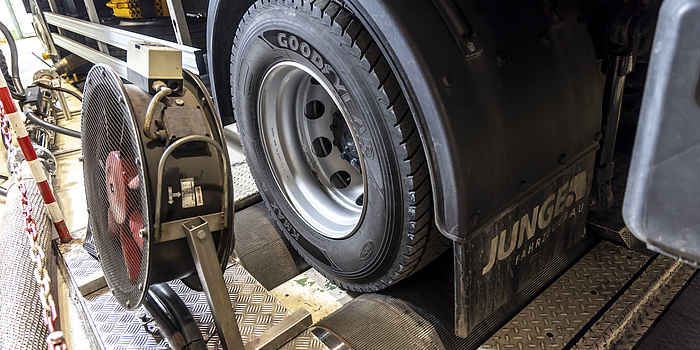
How the roller test benches work
The dynamometers or roller test benches are exactly what they sound like: rollers made of resistant steel built into the floor, which can simulate the driving resistance for all possible driving conditions, gradients and speeds thanks to a powerful electric motor. The drive axle and its tyres are placed on these rollers and the test run begins. The drivers see the route to be travelled on a screen. The electric motor simulates the conditions and sophisticated measurement technology captures everything that needs to be captured. These can be emissions that come from the vehicle’s exhaust or, more recently, abraded material that tyres or brakes eject into the environment.
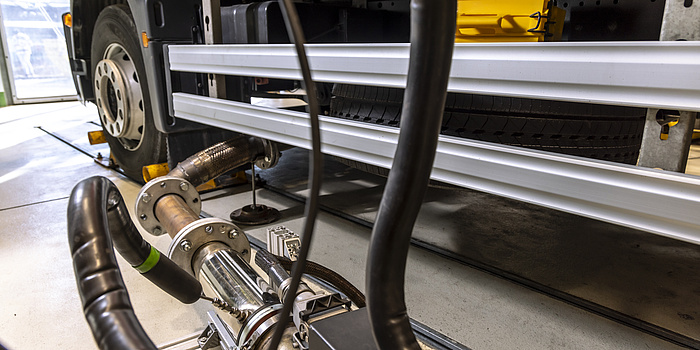
Modernised test bench for hydrogen and more safety
The HGV dynamometer was modernised last year and brought up to the latest safety standards. Test bench manager Konstantin Weller explains: “So far, we have been able to test classic combustion engines and, of course, electric vehicles. Following the conversion, we can now also analyse hydrogen vehicles, which require very special safety precautions.” Hydrogen is highly explosive and very light. If it escapes at any point in the measuring system, it rises and collects under the hall ceiling. One spark would be enough to cause a catastrophe. But Konstantin Weller reassures: “We’ve installed very sensitive sensors that immediately switch off the test bench in the event of a leak and activate the blower to transport the hydrogen to the outside.” As an afterthought he says: “So you can enter the test bench without any danger.” At the same time, a new air conditioning system was installed that can now generate very cold conditions in the test bench in addition to hot (and above all constant) summer temperatures. “And the test bench also looks great,” smiles Weller.
For comparison, there are also on-board measurements for vehicles that are actually travelling on the road. Mobile equipment is mounted on the vehicle – due to the smaller space and power requirements for the measuring devices, slightly fewer exhaust gas components can be detected. “We usually combine both methods – so we carry out the real-life measurements on the one hand and then refine everything on the test bench.”
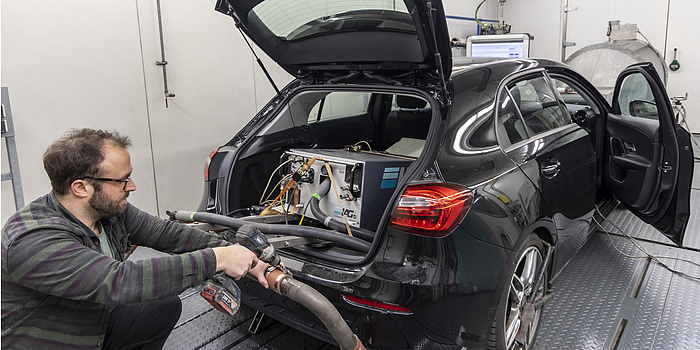
Simulation technology for certifications
The simulation models developed at the institute are an important factor in the investigations. Stefan Hausberger: “In recent years, we’ve developed an EU-wide system for the CO2 certification of lorries that works with component tests and vehicle simulation. Since 2019, every new lorry in the EU has been given its certified fuel consumption and CO2 values using this method. In another EU-wide activity, we are generating an even more comprehensive profile of all motor vehicles. This includes not only the exhaust gases from the exhaust pipe, but also all other emissions, such as tyre or brake dust.”
The test bench is open for test requests. Please contact Konstantin Weller or Stefan Hausberger if you have any ideas.
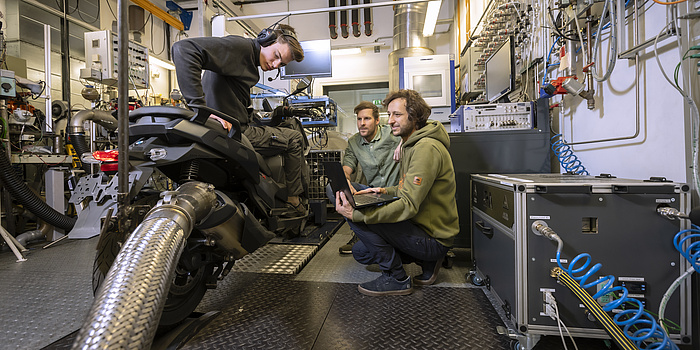
Kontakt
Stefan Hausberger
Ao.Univ.-Prof. Dipl.-Ing. Dr.techn.
Phone: +43 316 873 30260
hausberger@tugraz.at
Konstantin Weller
Dipl.-Ing. Dr.techn.
Phone: +43 316 873 30284
weller@fvt.at
Institute of Thermodynamics and Sustainable Propulsion Systems
Inffeldgasse 19
8010 Graz
